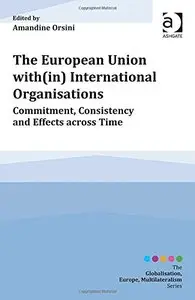The European Union With(in) International Organisations: Commitment, Consistency and Effects Across Time by Amandine Orsini
English | 2014 | ISBN: 147242414X | 191 pages | PDF | 1,3 MB
English | 2014 | ISBN: 147242414X | 191 pages | PDF | 1,3 MB
Since its creation, the European Union (EU) has been a participant in the activities of other International Organisations (IOs) or has been working together with them. Still, little information is available on what this long-term involvement with(in) IOs means for International Relations and European Studies. Why has the EU been involved with(in) IOs on such a long-term basis? How? With what impact? These three key research questions are addressed in this innovative volume, in a bid to explore the continuity of EU action with(in) IOs. While written by a diversity of authors (from European Studies or from International Relations, Europeans or non-Europeans) and from a diversity of disciplines (in particular Law and Political Science), each chapter of the volume elaborates on three common political concepts derived from three-fold questioning: commitment (for the why question), consistency (for the how question), and effects (for the question of impact). Consisting of a two part structure, the book is focussed in Part I on more general trends of the EU's long-term participation with(in) IOs - with contributions by A.Wetzel, P.Debaere, F.De Ville, J.Orbie, B.Saenen and J.Verschaeve, and P. Nedergaard and M.D.Jensen - and in Part II on more precise case studies on labour standards, public services, flexicurity, human trafficking and security - with contributions by R.Kissack, A.Crespy, E.Xiarchogiannopoulou and D.Tsarouhas, B.Simmons and A.DiSilvestro, and N. Graeger. Highly useful for students, academics and experts, this volume combines a clear and easy-to-use framework with new empirical data.



